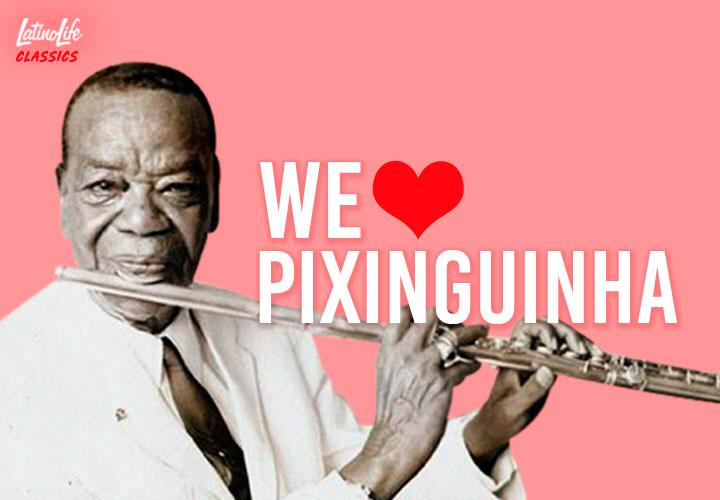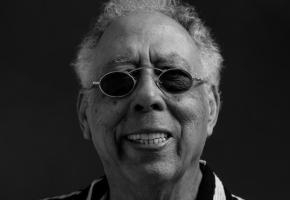‘If you have 15 volumes to talk about all of Brazilian popular music, rest assured it’s too little. But if you only have the space for a word, you are saved. Write quickly: Pixinguinha.’
This quotation by Ary Vasconcelos says for itself and needs no explanation. I dare, however, to continue it: “if you have 15 volumes to talk about Pixinguinha, rest assured that it is too little. But if I only had the space for one word, I would write: demiurge.” Demiurge of Brazilian popular music.
Born on 23 April 1897 and baptized Alfredo Rocha Vianna Filho, the composer, flutist, saxophonist, arranger and conductor, answered actually by the name of Pixinguinha. Why am I calling him the demiurge of Brazilian popular music? The word demiurge, in its Greek origin means ‘a person who works for the public, craftsman, manual worker, producer, creator’. The philosophical use of the word, however, is due to Plato, who in his dialogue Timaeus (360b.C) uses this term to designate the divine craftsman who "fashioned and shaped" the material world. This entity is not the creator of the universe, but who shapes its disorganized substance by imitating eternal essences. According to Plato, "the demiurge was good and, in what is good, there is never envy at all; and being devoid of envy, he wished everyone to be, as much as possible, like Him".
Pixinguinha throughout his life, divinely collected all the musical materials presented in Brazil and gave the shape of what we call Brazilian popular music. At the end of the 19th century and the beginning of the 20th, Rio de Janeiro experienced an effervescence of forms and genres of music - tangos, habaneras, maxixes, schottisches, batuques, polka, etc. - performed by the most diverse instrumental formations, such as brass bands, ensembles of guitars and cavaquinhos, flutes, saxophones, pianos and various percussions. Pixinguinha in a way, took all this disorganized material and, as a divine craftsman, collected the eternal essences and embodied them in music. This demiurgical act is evident in the genre ‘choro’, or ‘chorinho’, which, if it doesn’t have its origin in Pixinguinha, undoubtedly reached in him its apices. Its hundreds of compositions were recorded and performed by various artists in Brazil, receiving different instrumentation and arrangements.
Perhaps his most classic of all is Carinhoso, almost a second national anthem in Brazil. In this simple piece, the delicacy of the melodic line and the harmonic counterpoint structure reveals the genius of Pixinguinha. It is difficult to choose which interpretation to recommend, because they are innumerable and many of them magnificent. Here a simple one, with Paulinho da Viola and Mariza Monte, that moves me. (https://www.youtube.com/watch?v=8IhqXDQkWpQ)
Pixinguinha was also the precursor of Brazilian music as an instrument of cultural diplomacy when in 1922 he toured France with his musical group Os Oito Batutas. This tour, in the same year as the Modern Art Week in Brazil, is a landmark for the definition of what would be the international perception of Brazilian popular music. An image of fidelity to the authentic roots of musical Brazilianness combined with a capacity for incorporation and syncretism with other forms of music, such as jazz, for example.
One of his characteristic choros, Urubu (latter renamed as Urubu Malandro), is a good example of this characteristic (here performed by the group in a 1922 recording)
After the end of Os Oito Batutas, Pixinguinha had a great partner with whom he recorded many of his works, the flutist Benedito Lacerda. In these recordings Benedito Lacerda played Pixinguinha's daring melodies, and he, on the tenor saxophone, improvised counterpoints no less daring and melodic. A good example is the choro Um a zero.
It is difficult to select what to hear from this demiurge or what to say about his music. It is experiencing his music that we understand the ancestry that it carries. Hearing it or playing it, one feels part of a cosmos.
In 1968, together with João da Baiana and Clementina de Jesus, Pixinguinha records the Album Gente da Antiga, a tribute to the Brazilian African roots. I would say that this one of the masterpieces of Brazilian music ever.
One of his compositions that deserves to be highlighted is the waltz Rosa (here in a 1917 recording, played by Pixinguinha himself on the flute . This song later received lyrics by Otavio de Souza and became nationally known in a recording by Orlando Silva in 1937. It had many other recordings and figure among the masterpieces of Pixinguinha for its melodic lyricism.
On the 17 of February 1973, during the baptism ceremony of the son of a friend of whom he would be the godfather, in the Our Lady of Peace Church, in Ipanema, Pixinguinha suffers a fulminant heart attack and dies on the altar. Nothing more appropriate for a demiurge.
The following year, in 1974, the Escola de Samba Portela paid tribute to Pixinguinha in its samba enredo entitled ‘O mundo melhor de Pixinguinha’ (The best world of Pixinguinha)
The samba says:
Here comes Portela with Pixinguinha on its altar.
And the altar of an Escola
is the samba that we compose and bring to the streets to sing.
Portela, your Carinhoso theme is a prayer
talking about who stayed like a devotion in our heart.
Pixinguinha.
Brazilian popular music can undoubtedly be summarized in a name: Pixinguinha. But there will be not 15 volumes that will be able to define what this demiurge represents for Brazilian popular music. Pixinguinha captured the divine essence and shaped it into music. A music that stays as a devotion in our heart.
Dr. Vincius Mariano de Carvalho is director of King's Brazil Institute https://www.kcl.ac.uk/kbi
















